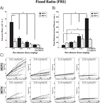The novel recreational drug 3,4-methylenedioxypyrovalerone (MDPV) is a potent psychomotor stimulant: self-administration and locomotor activity in rats
- PMID: 23597511
- PMCID: PMC3681807
- DOI: 10.1016/j.neuropharm.2013.04.003
The novel recreational drug 3,4-methylenedioxypyrovalerone (MDPV) is a potent psychomotor stimulant: self-administration and locomotor activity in rats
Abstract
Recreational use of the cathinone derivative 3,4-methylenedioxypyrovalerone (MDPV; "bath salts") has increased worldwide in past years, accompanied by accounts of health and legal problems in the popular media and efforts to criminalize possession in numerous jurisdictions. Minimal information exists on the effects of MDPV in laboratory models. This study determined the effects of MDPV, alongside those of the better studied stimulant d-methamphetamine (METH), using rodent models of intravenous self-administration (IVSA), thermoregulation and locomotor activity. Male Wistar rats were trained to self-administer MDPV or METH (0.05 mg/kg/infusion, i.v.) or were prepared with radiotelemetry implants for the assessment of body temperature and activity responses to MDPV or METH (0-5.6 mg/kg s.c.). METH and MDPV were consistently self-administered within 10 training sessions (mg/kg/h; METH Mean = 0.4 and Max = 1.15; MDPV Mean = 0.9 and Max = 5.8). Dose-substitution studies demonstrated that behavior was sensitive to dose for both drugs, but MDPV (0.01-0.50 mg/kg/inf) showed greater potency and efficacy than METH (0.1-0.25 mg/kg/inf). In addition, both MDPV and METH increased locomotor activity at lower doses (0.5-1.0 mg/kg, s.c.) and transiently decreased activity at the highest dose (5.6 mg/kg, s.c.). Body temperature increased monotonically with increasing doses of METH but MDPV had a negligible effect on temperature. Stereotypy was associated with relatively high self-administered cumulative doses of MDPV (∼1.5 mg/kg/h) as well as with non-contingent MDPV administration wherein the intensity and duration of stereotypy increased as MDPV dose increased. Thus, MDPV poses a substantial threat for compulsive use that is potentially greater than that for METH.
Copyright © 2013 Elsevier Ltd. All rights reserved.
Conflict of interest statement
The authors do not have any financial or other conflicts of interest to declare for this work.
Figures






References
-
- Aarde SM, Huang P-K, Creehan KM, Vaillancourt BD, Vandewater SA, Wright MJ, Miller ML, Taffe MA. Methylenedioxypyrovalerone (MDPV): Self-administration and acute drug challenges in rats. The FASEB Journal. 2012;26:1040–1045.
-
- Aarde SM, Wright JMJ, Buczynski MW, Angrish D, Parsons LH, Houseknecht KL, Dickerson TJ, Taffe MA. Behavioral and Thermoregulatory Effects of Novel Cathinone Derivative Drugs 4-MMC and MDPV. Neuropsychopharmacology : official publication of the American College of Neuropsychopharmacology. 2011;36:S441.
-
- Baumann MH, Partilla JS, Lehner KR, Thorndike EB, Hoffman AF, Holy M, Rothman RB, Goldberg SR, Lupica CR, Sitte HH, Brandt SD, Tella SR, Cozzi NV, Schindler CW. Powerful Cocaine-Like Actions of 3,4-Methylenedioxypyrovalerone (MDPV), a Principal Constituent of Psychoactive 'Bath Salts' Products. Neuropsychopharmacology : official publication of the American College of Neuropsychopharmacology. 2013;38:552–562. - PMC - PubMed
Publication types
MeSH terms
Substances
Grants and funding
LinkOut - more resources
Full Text Sources
Other Literature Sources
Medical
Miscellaneous

